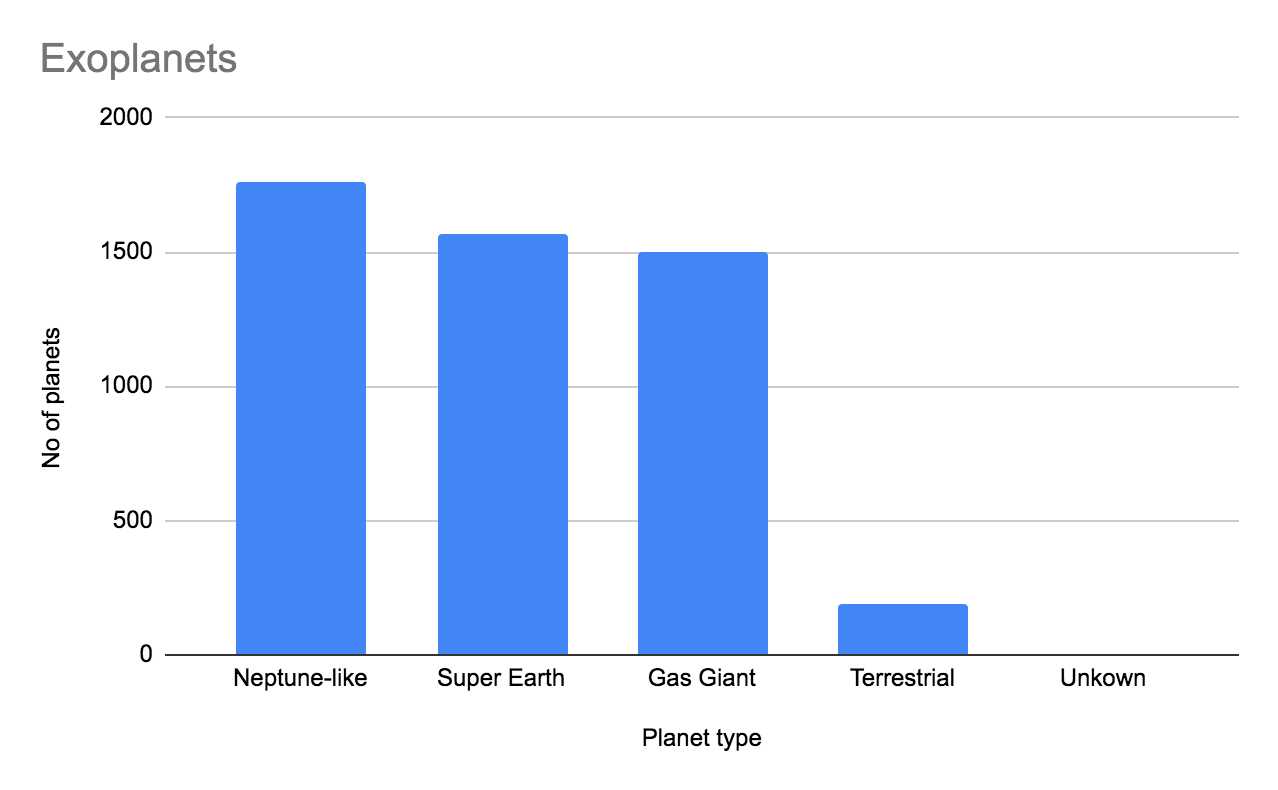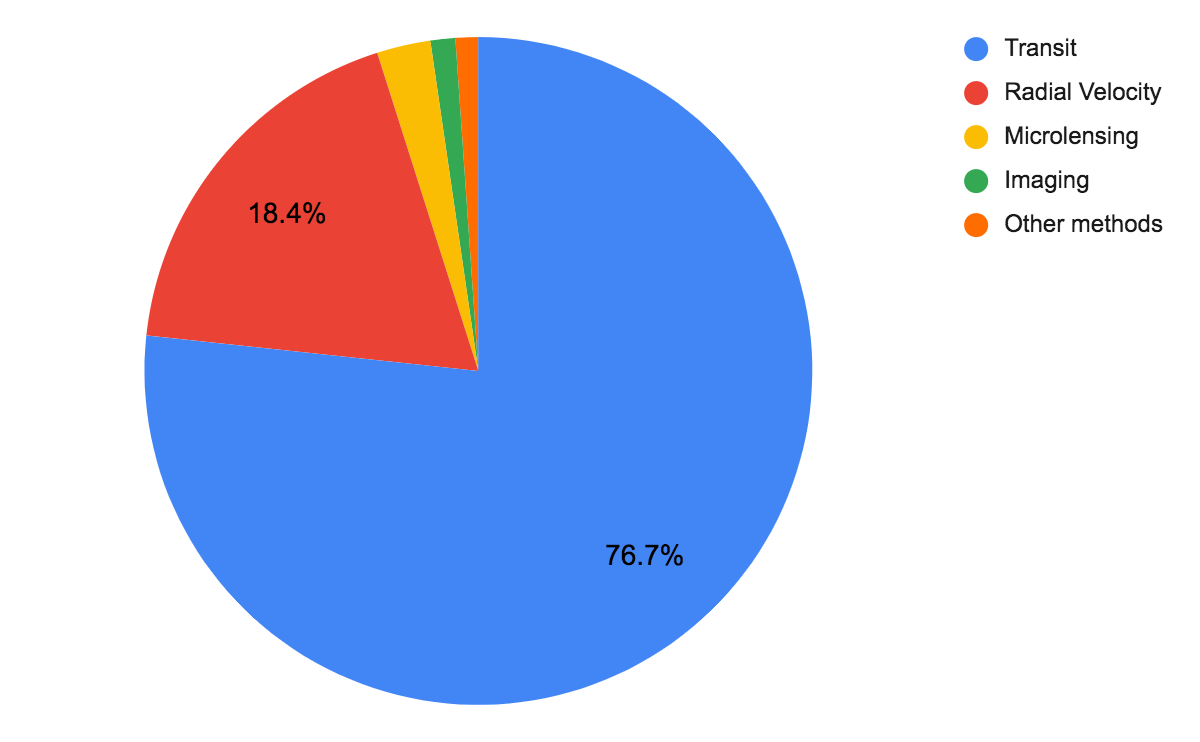First of all. What are exoplanets? We know that the Earth revolves around the Sun (our star). Similarly, even other planets revolve around other stars. These planets are called exoplanets.
What are the different types of exoplanets?
There are four types of exoplanets:
Terrestrial - Rocky planets like the earth which have a solid surface and are small.
Gas Giants - Planets like Jupiter, which have no solid surface and are made of gas. They are very large.
Super-Earths - Planets that can be gassy or rocky. They are Bigger than Terrestrial planets but smaller than Gas Giants.
Neptune-like - Gassy planets that are larger than Super-Earths, but smaller than gas giants.
Thus we can line up the types in their ascending order of size:
Terrestrial < Super Earth < Neptune Like < Gas Giants
Lots of exoplanets continue to be discovered every month. Therefore, it is hard to give an exact count of the number of exoplanets discovered so far. This table shows the number of exoplanets discovered up until May 2022.
Neptune-like: 1760
Super Earth: 1569
Gas Giant: 1500
Terrestrial: 187
Unknown: 5
The above table has been converted into a graph for better understanding.
OBSERVATIONS
The most common type of exoplanet is Neptune-like. This makes them bigger than Super-Earths but smaller than Gas-Giants.
The least common types of exoplanets are Terrestrial. There are 5 unknown exoplanets.
Now that we are familiar with the types of exoplanets, let us now look at the ways in which exoplanets are discovered.
One such method is the Transit method. When an exoplanet passes in front of a star while revolving, it blocks the light of the star or dims the light of the star. This method looks for such cases.
Another method is the Radial Velocity method. This method relies on the fact that if a planet is big enough, its gravity tugs on its star causing the star to wobble. This method looks for such wobbling stars.
A third method is the Microlensing method. When a planet is big enough, it starts to bend its star’s light. This method looks for such scenarios.
The last method is the Imaging method. Astronomers take pictures of places where there might be exoplanets and analyze the photos to find exoplanets.
Here is a graph that shows the percentage of exoplanets found using the above methods.
Transit - 76.70% Microlensing - 2.60%
Radial Velocity - 18.40% Imaging - 1.20%
Other methods. - 1.10%
OBSERVATIONS
1.1% of the exoplanets were found using other methods
The Transit method is the most effective.
The imaging method is not that effective
Radial velocity is the second most effective
The first exoplanets were discovered using the pulsar timing method. Later, in 1995 an exoplanet was discovered using the Radial Velocity method for the first time. Immediately the next year 6 other planets were discovered using the same method. Since then scientists started discovering more and more exoplanets using that method. Only in 2002 was an exoplanet discovered using the Transit method for the first time. Even still, the Radial Velocity method was used more. Later, in 2006 an exoplanet was discovered using the imaging method for the first time. After that, the transit method started rapidly discovering more and more exoplanets. In 2014 a huge number of exoplanets started to be discovered using the transit method. Soon by 2022 most of the exoplanets had been discovered by the Transit method.
All this data was obtained from NASA’s dashboard for exoplanets: https://exoplanets.nasa.gov/discovery/discoveries-dashboard/
Try scrolling down to the exoplanet census and playing around with the slider bar below.
Try going to the exoplanet catalog and selecting any planet of your choice. Try to find out all you can about the planet. It has almost all the information you need.
for example:
The planet 2MASS J01225093-2439505 b
It is 110 lightyears away from the Earth.
It is a gas giant.
It was discovered in 2013 by direct imaging methods.
It looks very similar to Jupiter
Even though its size is the same as Jupiter's its mass is 24.5 times the mass of Jupiter.
This exercise was inspired by this article at ScienceNewsExplores.
Do you know anything more about exoplanets? Share with us in the comments.



